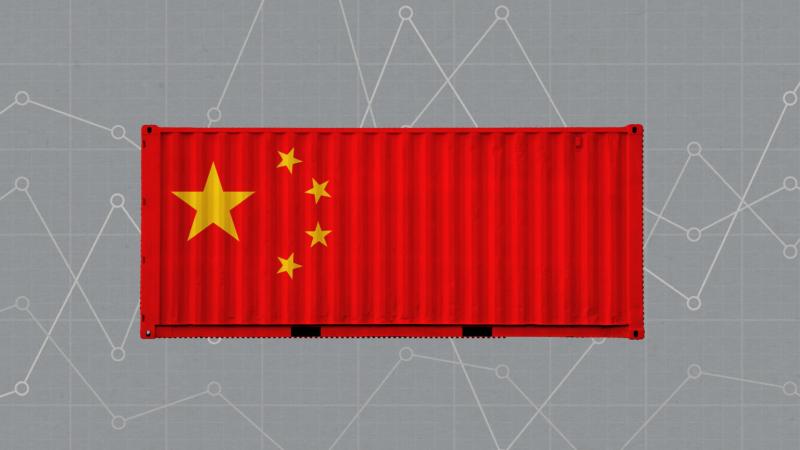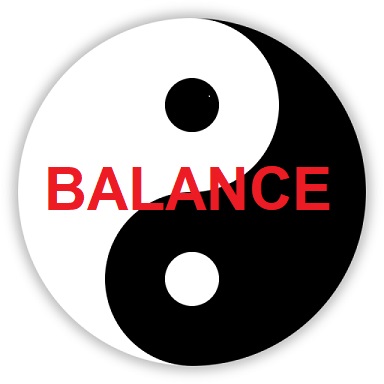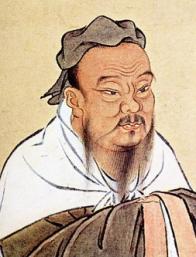Has Trade with China Really Cost the U.S. Jobs?
By: by Scott Kennedy and Ilaria Mazzocco - Harvard Business Review



Has Trade with China Really Cost the U.S. Jobs?

HBR Staff/wera Rodsawang/-goldy-/Getty Images
As the U.S.- China relationship continues to deteriorate, the role of trade has come under increasing scrutiny. Commercial exchanges between the two countries used to be the ballast of the relationship. Trade was understood to benefit both countries economically and helped reduce tensions on political and strategic issues.
Over the past decade, this has changed dramatically — not only is economic interdependence now seen in many quarters as a liability, but much of the Washington policy community now believes that the benefits of trade with China are far outweighed by the negative effects. A central concern is the negative impact on manufacturing jobs and U.S. employment more generally. This sentiment is particularly held in regions of the country that had strong manufacturing sectors prior to 2000, such as the Midwest and the South.
Although the debate appears to be settled in Washington, it is far from over among economists, who have analyzed this issue utilizing a range of different methodologies and datasets. Whether intentionally or not, Washington has gravitated toward one side of the debate, and it’s important that the policy and business communities be aware of the larger ongoing conversation that scholars are still having. We recently reviewed the literature on the “China Shock” and its effect on employment in the U.S., with a focus on three teams of economists who approach the question using different methods and datasets.
So, what does a broader review of the data from multiple studies show? Scholars generally find that prior to 2010, imports from China negatively affected manufacturing jobs in the U.S. However, there are mixed findings on the net effect on the economy, the final balance of jobs lost in manufacturing, and the growth in service sector jobs. There is also no evidence of trade with China having a significant negative effect on jobs after 2010 — the job loss in manufacturing documented in the early 2000s due to trade with China is not continuing today.
There is one other result that all scholars seem to agree on: better-educated, more economically diverse regions of the United States were affected far less by the surge in imports from China. This finding is consistent with data on the impact of globalization in other countries, where better education and opportunities for retraining improved the likelihood that workers would benefit from international trade.
A Short History of the “China Shock”
China’s rise as a manufacturing giant originates in 1978 and the announcement of “Reform and Opening,” when the country’s leadership took the first steps to allow foreign investment and to move away from the planned economy. The effects were first felt in earnest in the 1990s when liberalization policies accelerated, and an increasing number of foreign firms began to relocate production to China.
David Autor (M.I.T.), David Dorn (University of Zurich), and Gordon Hanson (Harvard Kennedy School) argue that the “shock” to the global economy began in 1992, when foreign trade became a substantial element of China’s economy, only to end around 2010 when China’s share of U.S. imports stabilized.
The growth in China’s exports was due to domestic reforms that increased productivity and policies to open the country to global trade. Maoist-era economic policies had effectively repressed China’s economic performance, while Deng Xiaoping’s reforms rapidly unleashed China’s economic potential. Entry into the World Trade Organization (WTO) in 2001 amplified China’s already improving productivity. Moreover, the certainty of lower tariff and non-tariff barriers also made China an attractive destination for foreign direct investment.
Several important circumstances coincided with China’s ascension to the WTO in the early 2000s. For one thing, the share of manufacturing employment had already been falling in the United States as other sectors of the economy, such as services, gained importance. Even so, all three of the academic teams whose work we reviewed conclude that the China shock had a negative effect on manufacturing jobs in the U.S. in at least some regions between 2000 and 2007. In other words, manufacturing jobs were already declining, but in some parts of the U.S. trade with China sped that process up.
Did the China Shock Cost the U.S. Jobs?
Despite some of the rhetoric in Washington, there’s far less agreement among economists on the total impact of the China shock on American jobs. Autor and his co-authors have consistently found that areas that were more exposed to trade with China experienced a net job loss that was not compensated by workers moving to more vibrant places or growth in employment in sectors other than manufacturing.
Nicholas Bloom (Stanford University) and his co-authors take a different approach by trying to account for the effects of trade with China on the service sector in addition to manufacturing. They find that loss of employment in areas with low levels of human capital was compensated for by an increase in service jobs in areas with high human capital, such as the West coast and the Northeast. Consequently, they argue that trade with China did not cause a net loss of American jobs. This does not mean that there were no significant losses within regions. Like Autor and his co-authors, Bloom and his colleagues did not find that workers migrated in response to the changing job opportunities. Thus, Chinese imports may have caused jobs and earnings to move from the heartland of the United States to the coasts.
A third research effort by Zhi Wang (George Mason University) and colleagues finds an increase in service jobs even in the regions that experienced the sharpest fall in manufacturing jobs due to import competition with China. According to their data, which they claim captures employment changes throughout the entire supply chain, trade led to an increase in other job opportunities in the service sector even within areas that were hit the hardest by import competition.
And all three groups find that education significantly reduced the negative effects of the China shock: regions with higher shares of college graduates were less negatively affected.
Responding to Trade Shocks
Putting it all together, there’s agreement that some U.S. regions lost manufacturing jobs as a result of trade with China in the early 2000s, but that that trend has ended. And there’s agreement that more educated regions fared better. There’s less consensus on how the China shock affected jobs overall, but it seems likely that it led to an increase in service sector employment, and it may have even increased total U.S. employment — but with more of that employment shifting to the coasts.
These findings are critical to keep in mind as policymakers consider the U.S. relationship with China, and as businesses reconsider their own relationship with the world’s second largest economy. There may be good reasons for the U.S. and China to decouple or for companies to rethink their supply chain, but the negative economic effect of trade on the U.S. isn’t necessarily one of them.
It’s important to note that the U.S. is not the only country that experienced rising Chinese imports in the early 2000s, and some others seem to have handled it differently. In Denmark, a country with very liberal firing regulations (like the United States) but strong unions, import competition with China appears to have resulted in a decrease in wages but not a big fall in employment. Employees’ work hours fell, but they were kept on the payroll by companies. One study suggests this may have led to an increase in workers seeking additional education—which subsequently led to higher salaries. And Germany’s industrial structure seems to have largely spared the country from import competition with China in the 2000s.
The economists highlighted in this feature do not always agree with each other about how to measure the effect of imports on employment, but there is little debate over what the best solutions to job displacement are. None of the scholars analyzed in this feature have ever publicly argued that tariffs imposed after the fact can help address the effects of a previous trade shock. It is not even clear they would effectively shield workers if they were in place to begin with. And certainly, tariffs do little to solve the woes of American workers who have lost their jobs. Moreover, economists agree that tariffs raise prices for consumer goods, primarily hurting lower-income Americans.
Most scholars agree that higher education and worker retraining programs, along with government transfers, would be the most effective way to address the issue. For example, Autor, Dorn, and Hanson discuss the unrealized potential of the Trade Adjustment Assistance program, which was insufficiently funded to ever have a significant impact. This summer, Congress failed to reapprove the program, which had become increasingly small in recent years. A better-funded and comprehensive initiative to help displaced workers — regardless of whether they lost their jobs due to trade or technological change — could be an important approach to consider.
But the question of how to manage trade policy and import competition needs to begin with a recognition of the facts. The China shock did cost regions of the U.S. manufacturing jobs during the first decade of the 2000s, but not since. Plus, there are some ways in which trade with China may have benefitted Americans, including lower prices. The policy community needs to fully consider this complex record when determining how to most effectively move forward.
This article was adapted from “The China Shock: Reevaluating the Debate,” originally published by CSIS.
Tags
Who is online
74 visitors


Comments are subject to the Confucius group RED BOX RULES which can be accessed by clicking on this link -> or by clicking on the Confucius group avatar located at the top right of the article page above, either of which will open the Confucius group home page.
The Washington Examiner is well known for it's obnoxiously extreme anti-China bias, and since an article about Kissinger published by it has been posted on the Front (Home) Page I thought that in reply I would try to act more intelligently and accurately by posting NOT an article from a Chinese source that would be bound to deny all the false misinformation demonizing China as in that article but post a more common sense article indicating the views of more educated and unbiased experts published in the Harvard Business Review that is a consolidated version of one originally posted by the Center for Strategic and International Studies.
Besides what is in the article, let's not forget the more than 150 billion dollars in American exports to China during 2022, and the profits of American corporations operating in China.
Mmmmkay....
I try to be fair and reasonable, although that isn't necessarily the method many adhere to on this site.
I know you do Buzz.
Thank you Greg.